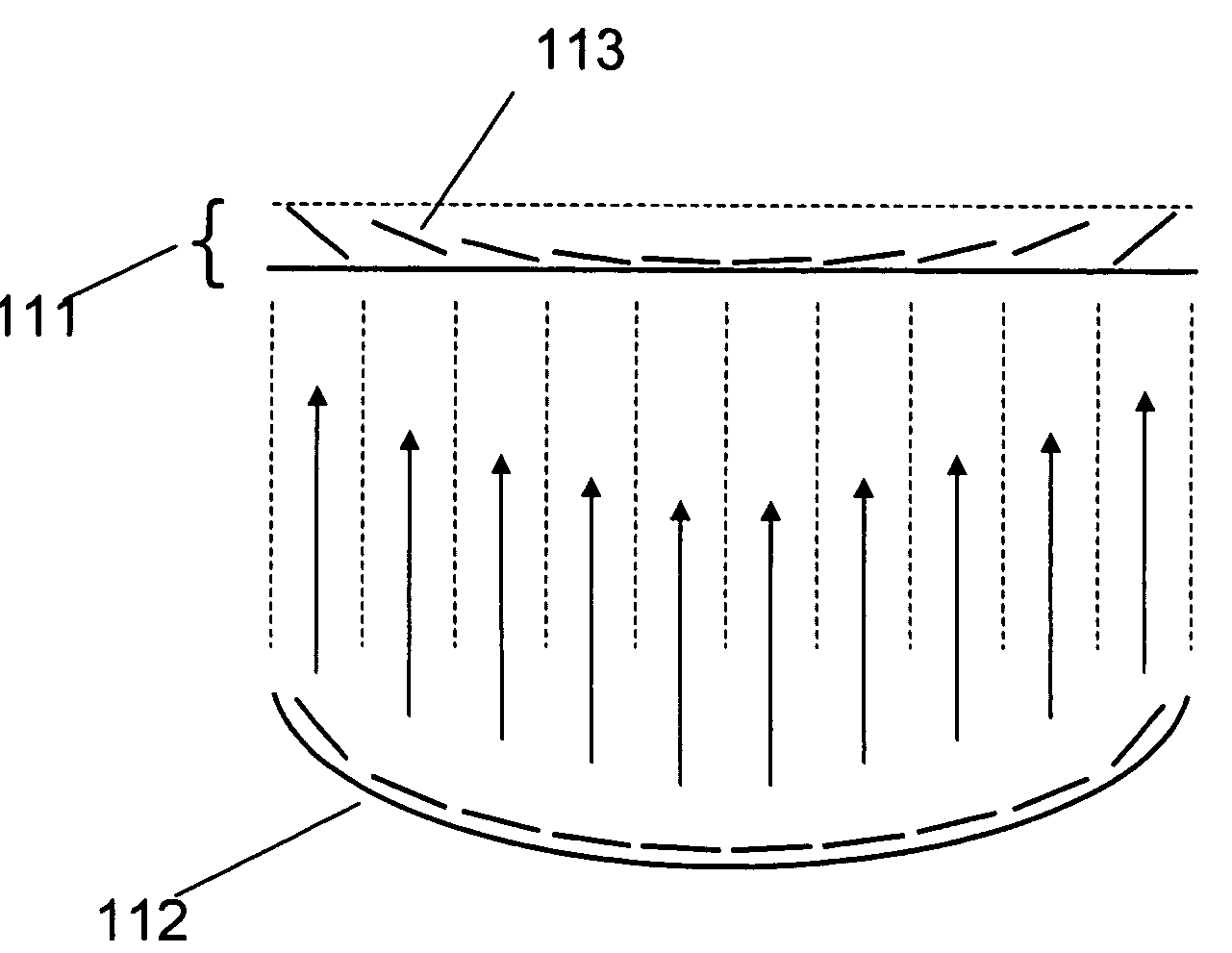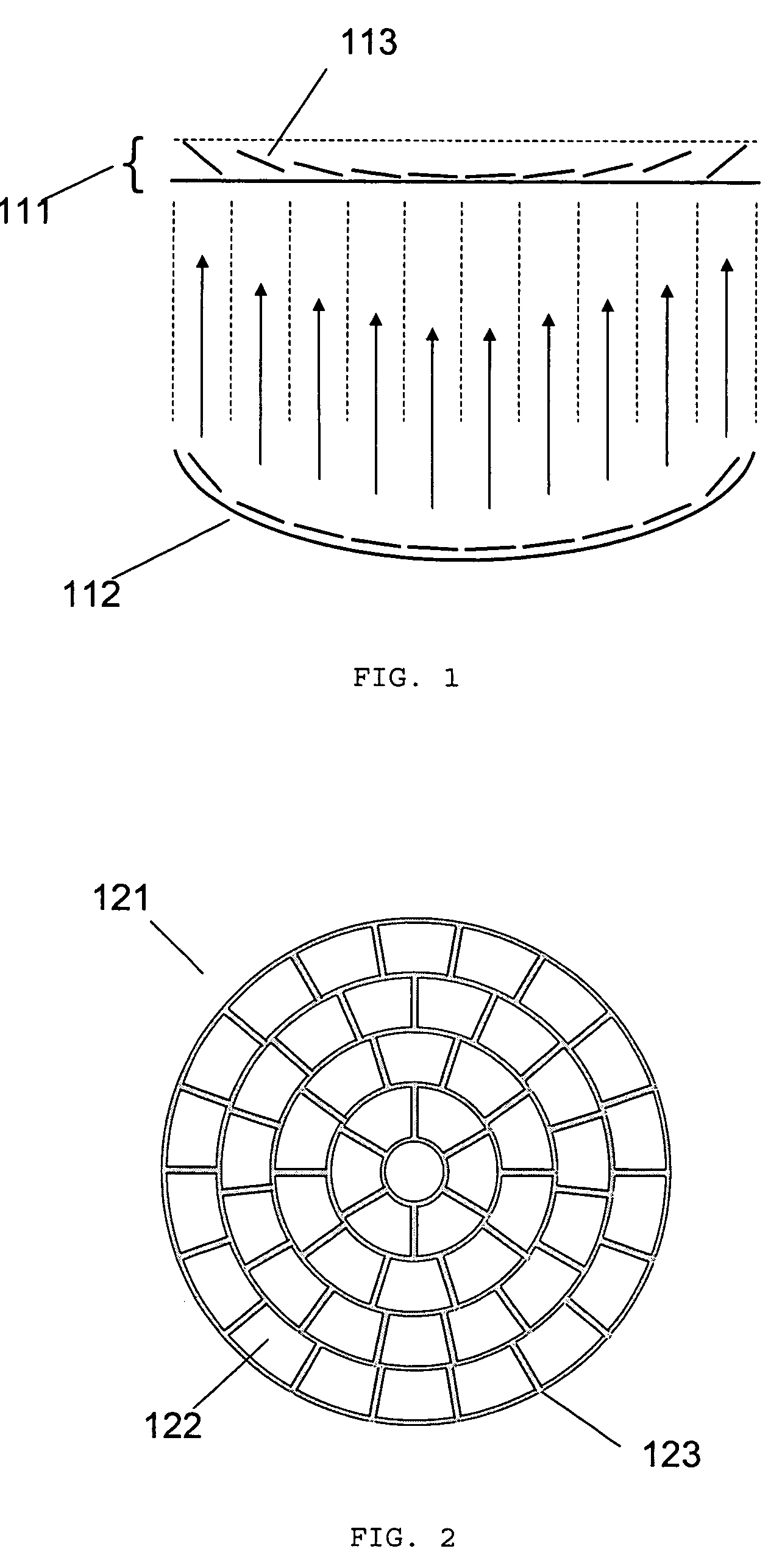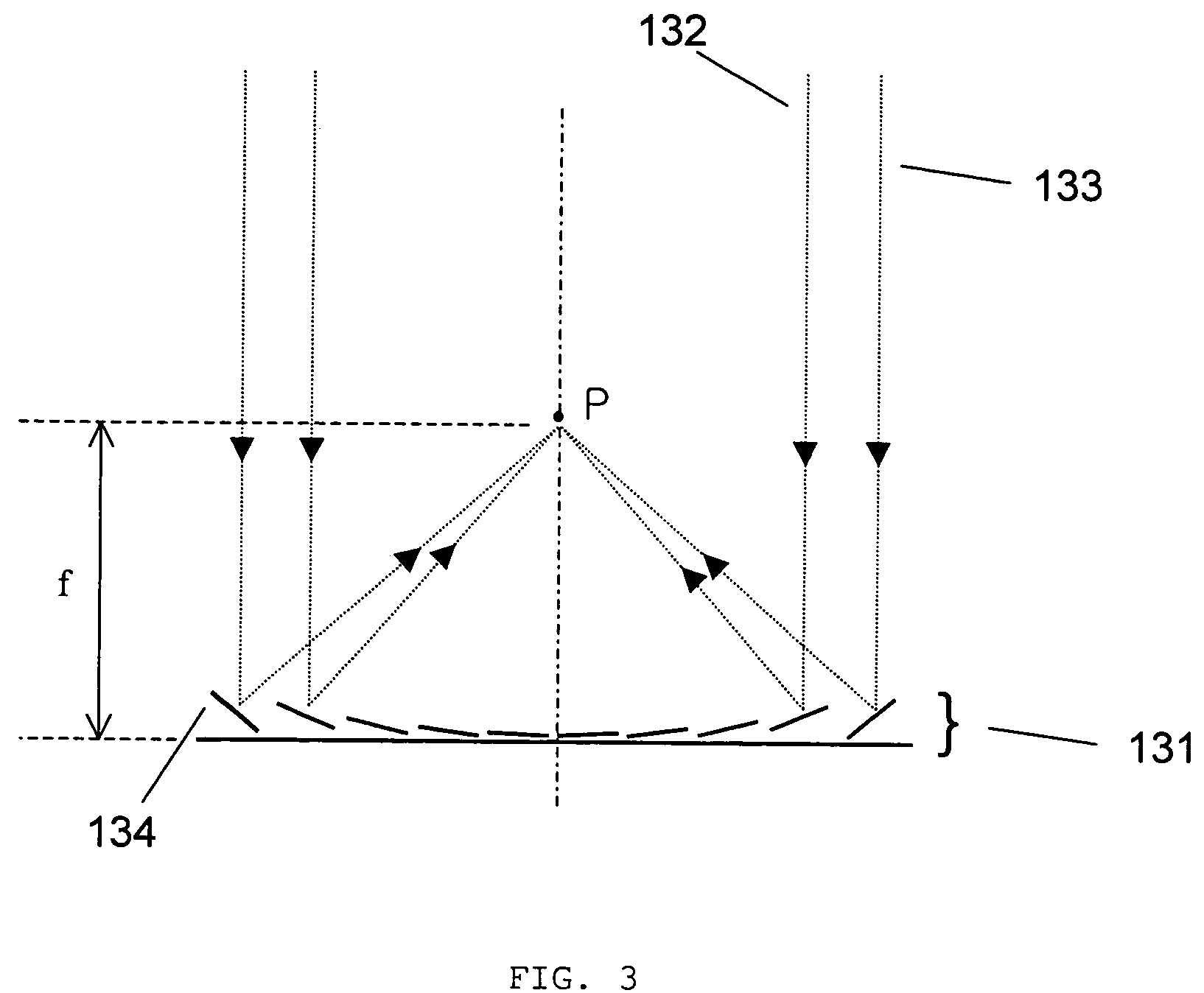Variable focal length lens comprising micromirrors
a variable focal length and mirror technology, applied in the direction of mirrors, instruments, mountings, etc., can solve the problems of complex driving mechanisms to control the relative positions of refractive lenses, slow response time, and low focusing efficiency, so as to facilitate the obtaining a large numerical aperture with a small rotation of the mirror, reduce the electrical resistance of the wire, and reduce the effect of electrical resistan
- Summary
- Abstract
- Description
- Claims
- Application Information
AI Technical Summary
Benefits of technology
Problems solved by technology
Method used
Image
Examples
first embodiment
[0052]A first embodiment is shown in FIGS. 1 through 7.
[0053]FIG. 1 illustrates the principle of the micromirror array lens 111. There are two conditions to make a perfect lens. The first is the converging condition that all lights scattered by one point of an object should converge into one point of the image plane. The second is the same phase condition that all converging light should have the same phase at the image plane. To satisfy the perfect lens conditions, the surface shape of conventional reflective lens 112 is formed to have all lights scattered by one point of an objective to be converged into one point of the image plane and have the optical path length of all converging light to be same.
[0054]A micromirror array arranged in flat plane can satisfy two conditions to be a lens. Each of the micromirrors 113 rotates to converge the scattered light. Because all micromirrors 113 of the micromirror array lens 111 are arranged in a flat plane as shown in FIG. 1, the optical pa...
second embodiment
[0069]A second embodiment, variable focal length lens comprising micromirrors with one degree of freedom rotation, is shown in FIGS. 8 through 11.
[0070]FIG. 8 illustrates the principle of the conventional micromirror array lens 211, which corresponds to FIG. 1 of the first embodiment in its description.
[0071]FIG. 9 illustrates how the micromirror array lens 221 comprising micromirrors with one DOF rotation images. Arbitrary scattered lights 222, 223 are converged into one point P of the image plane by controlling the positions of the micromirrors 224. The phases of arbitrary lights 222, 223 are not adjusted to satisfy same phase condition. Even though the phase condition is not satisfied, low quality imaging or focusing is still possible.
[0072]FIG. 10 illustrates the in-plane view of a circular micromirror array lens 231 comprising micromirrors with one DOF rotation. All micromirrors are arranged in a flat plane because they are fabricated by known microfabrication processes.
[0073]I...
third embodiment
[0075]A third embodiment, variable focal length lens comprising micromirrors with two degrees of freedom rotation, is shown in FIGS. 12 through 18.
[0076]FIG. 12 illustrates the principle of a conventional micromirror array lens 311, which corresponds to FIG. 1 of the first embodiment in its description.
[0077]FIG. 13 illustrates how the micromirror array lens 321 comprising micromirrors with two DOF rotation images. Arbitrary scattered lights 322, 323 are converged into one point P of the image plane by controlling the positions of the micromirrors 324. The phases of arbitrary light 322, 323 are not adjusted to satisfy the same phase condition. Even though the phase condition is not satisfied, low quality imaging or focusing is still possible.
[0078]It is desired that each of the micromirrors 324 has a curvature because the ideal shape of a conventional reflective lens 312 has a curvature. According to focal length change of the lens, the curvature of micromirror should be controlled....
PUM
| Property | Measurement | Unit |
|---|---|---|
| focal length | aaaaa | aaaaa |
| degree of freedom | aaaaa | aaaaa |
| electrical conductivity | aaaaa | aaaaa |
Abstract
Description
Claims
Application Information
 Login to View More
Login to View More - R&D
- Intellectual Property
- Life Sciences
- Materials
- Tech Scout
- Unparalleled Data Quality
- Higher Quality Content
- 60% Fewer Hallucinations
Browse by: Latest US Patents, China's latest patents, Technical Efficacy Thesaurus, Application Domain, Technology Topic, Popular Technical Reports.
© 2025 PatSnap. All rights reserved.Legal|Privacy policy|Modern Slavery Act Transparency Statement|Sitemap|About US| Contact US: help@patsnap.com



